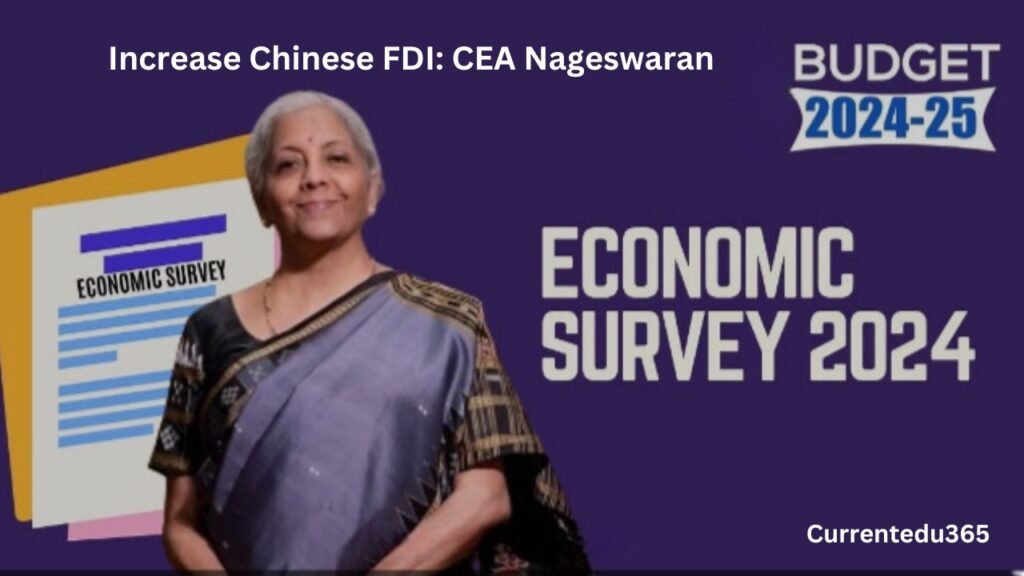On July 22, Finance Minister Nirmala Sitharaman tabled the much-anticipated. Economic Survey document in Parliament, setting the stage for the Union Budget announcement. This annual report, meticulously prepared by the Economics Division of the Department of Economic Affairs. Under the guidance of India’s Chief Economic Advisor (CEA) V. Anantha Nageswaran, provides a comprehensive review of the nation’s economic performance, developmental programs, and policy initiatives over the past financial year, while also offering a forward-looking perspective for the coming year. Economic Survey Highlights: CEA

Read More:- PM Modi Inaugurates 46th Session of World Heritage Committee at Bharat Mandapam
Strategic Economic Integration with China:In a significant statement, CEA Nageswaran proposed that India should consider integrating into China’s supply chain or encouraging more Foreign Direct Investment (FDI) from the neighboring economic giant. “To enhance our global export capabilities, we need to strategically leverage our economic relationship with China,” Nageswaran emphasized, highlighting the potential benefits of such a move for India’s export sector. Economic Survey Highlights: CEA
Key Insights from the Economic Survey 2023-24:The Economic Survey document is divided into two parts. Part A covers the country’s broad economic developments and challenges, while Part B delves into specific topics such as social security, poverty, education, healthcare, human development, and climate change. Navigating Global Challenges to Achieve Domestic Growth:Addressing the complex issues of climate change and energy transition. Nageswaran pointed out the challenges posed by multiple countries simultaneously striving for net-zero emissions. Economic Survey Highlights: CEA
Geopolitical fragmentation, climate change, and global trade did not impact East Asia during their transition from lower-income to higher-income countries. We must navigate our path towards Viksit Bharat amidst these headwinds,” he remarked. Despite these global challenges, India has maintained an average growth rate of around 8% till March 2024. With real GDP standing 20% above pre-pandemic levels. This growth is being driven by public sector capital formation at both the union and state levels, as well as a recovery and growth in private capital expenditure.
AI and the Future of the Job Market:
Nageswaran also discussed the implications of Artificial Intelligence (AI) on the job market. While acknowledging AI’s high energy intensity, he noted that its overall impact remains uncertain. “AI might influence business process outsourcing jobs, presenting a minor short-term issue for India. But it could offer substantial long-term advantages,” he observed, suggesting that India needs to adapt and prepare for these technological shifts.
As India charts its course towards becoming a developed nation, the insights from the Economic Survey and the strategic guidance of CEA Nageswaran. Underscore the importance of international economic partnerships, robust domestic growth, and technological adaptation. The upcoming Union Budget will reveal how these insights shape the government’s economic policies and initiatives for the year ahead. Economic Survey Highlights: CEA


